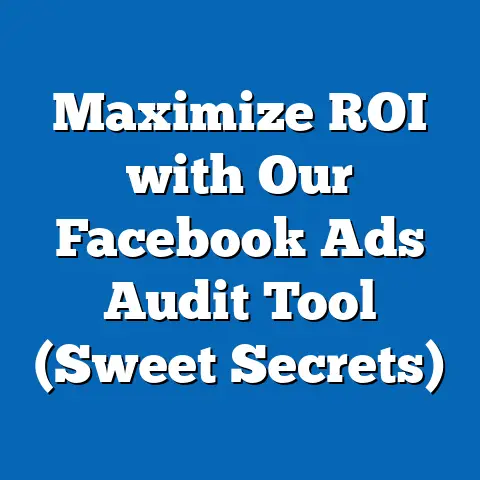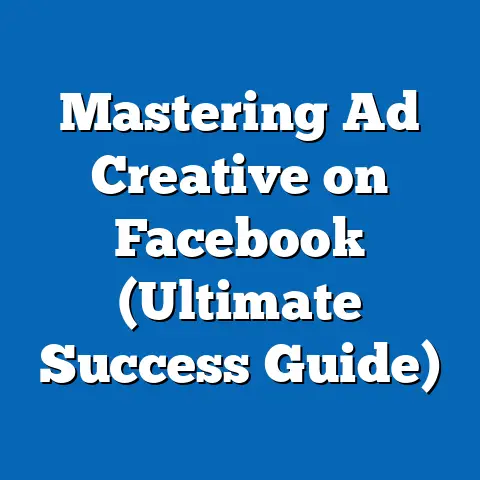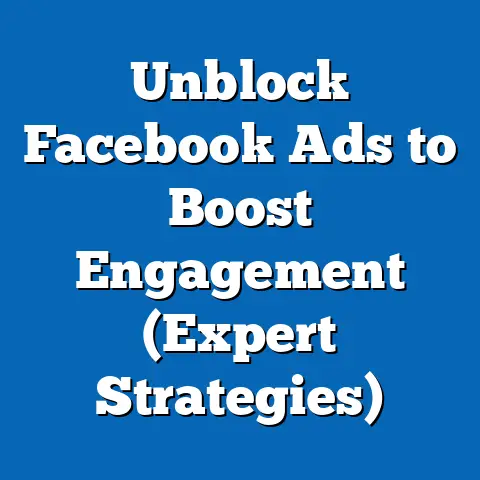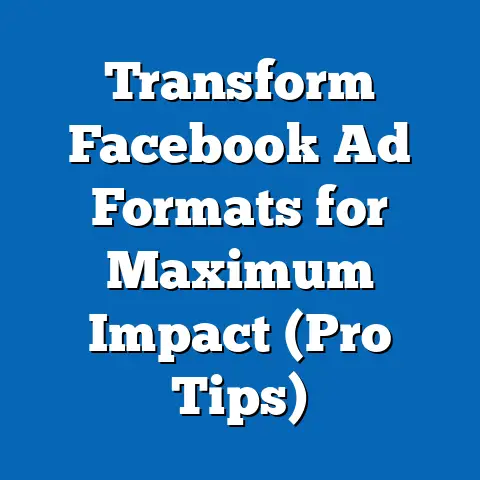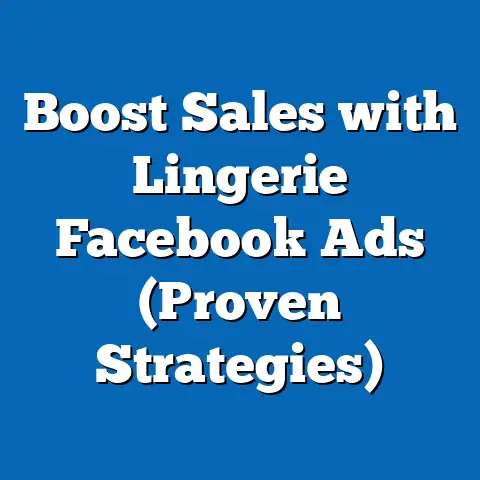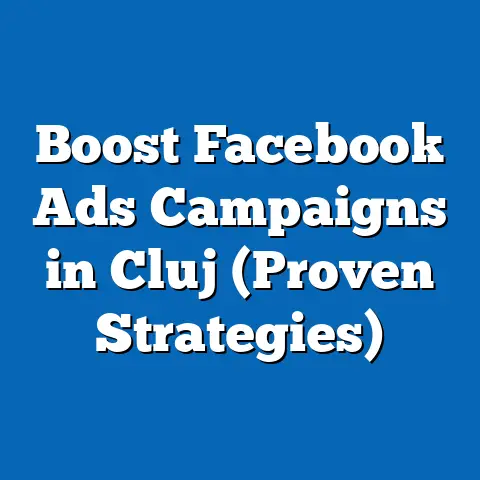Edit Facebook Ad with Confidence (Expert Tips Inside)
Let’s dive into the world of Facebook advertising, but with a twist. Imagine your Facebook ads as a cluttered space. Just like a clean, organized room boosts your productivity and creativity, a well-edited Facebook ad can significantly improve engagement and conversion rates. The key is clarity and precision. Just as every item in a clean room has its place, every element of your ad should serve a purpose. Today, I’m going to guide you through the process of editing your Facebook ads with confidence, turning that cluttered digital space into a lean, mean, converting machine!
Understanding the Basics of Facebook Ads
Before we start wielding our editing tools, let’s cover the basics. Facebook ads are, at their core, paid messages designed to reach a specific audience on the Facebook platform (which includes Instagram, Messenger, and the Audience Network). They’re a powerful tool in the digital marketing arsenal, allowing businesses to connect with potential customers based on demographics, interests, behaviors, and more.
There’s a whole buffet of Facebook ad types to choose from:
- Image Ads: Simple yet effective, these ads use a single image and accompanying text to capture attention.
- Video Ads: Engaging and versatile, video ads can tell a story, demonstrate a product, or provide a tutorial.
- Carousel Ads: Showcase multiple products or features in a single ad, allowing users to scroll through a series of images or videos.
- Slideshow Ads: Create a video-like experience from static images, often using music and transitions to enhance engagement.
- Collection Ads: Ideal for e-commerce, these ads display a main image or video above several product images, making it easy for users to browse and purchase.
The real magic of Facebook ads lies in targeting. It’s not about shouting your message to everyone; it’s about whispering it to the right people. Audience segmentation is key – understanding your target audience’s demographics, interests, and behaviors allows you to craft ads that resonate with them on a personal level.
The Importance of Editing Your Ads
So, why is editing so important? Think of it this way: your first draft is rarely your best work. Editing is where you refine your message, polish your visuals, and ensure that your ad is hitting all the right notes. It’s the difference between a good ad and a great ad.
Editing isn’t just about fixing typos (though that’s important, too!). It’s about optimizing every aspect of your ad to maximize its impact. Small changes, like tweaking the headline, swapping out an image, or adjusting your call to action, can lead to significant improvements in ad performance.
I’ve seen this firsthand. I once worked on a campaign for a local bakery. We initially ran an ad with a generic image of a cake and the headline “Best Cakes in Town.” It performed okay, but nothing spectacular. Then, we decided to edit the ad. We swapped the generic cake image for a mouthwatering photo of their signature chocolate cake, and we changed the headline to “Indulge in Our Decadent Chocolate Cake Today!” The results were incredible. Click-through rates doubled, and the bakery saw a noticeable increase in orders.
According to a recent study by HubSpot, businesses that actively edit and optimize their ad campaigns see an average of 20% higher conversion rates compared to those that don’t. That’s a significant boost, and it highlights the power of consistent editing.
Here are my top tips for editing your Facebook ads with confidence:Tip 1: Review Your Objectives
The first question you should ask yourself before editing any ad is: “What am I trying to achieve with this campaign?” Are you aiming to increase brand awareness, generate leads, drive website traffic, or boost sales? Your ad content should be laser-focused on achieving that specific goal.
For example, if your objective is to generate leads, your ad should emphasize the value of your lead magnet (e.g., a free e-book, a webinar, a consultation). Your headline might be something like “Download Our Free E-Book and Learn the Secrets to [Your Industry].” Your call to action should be clear and compelling, such as “Download Now” or “Get Your Free Copy.”
If your objective is to drive website traffic, your ad should highlight the benefits of visiting your website. Your headline might be something like “Discover the Latest Trends in [Your Industry] on Our Blog.” Your call to action should encourage users to click through to your site, such as “Learn More” or “Visit Our Website.”
I always remind my clients that clarity is key. Make sure your ad content is aligned with your campaign goals, and you’ll be well on your way to success.
Takeaway: Always start by clarifying your campaign objectives. Ensure every element of your ad supports that goal.
Tip 2: Simplify Your Message
In the age of information overload, people have short attention spans. You have just a few seconds to grab their attention and convey your message. That’s why it’s crucial to simplify your message.
Avoid jargon, complex language, and lengthy paragraphs. Get straight to the point. Use clear, concise language that everyone can understand. Focus on the key benefits of your product or service, and highlight what makes you unique.
I remember working with a tech startup that was launching a new software product. Their initial ad copy was filled with technical terms and industry jargon. It was confusing and off-putting to their target audience. We worked together to simplify the message, focusing on the core benefits of the software and using language that anyone could understand. The result? A significant increase in click-through rates and conversions.
Takeaway: Keep your message short, sweet, and to the point. Focus on the key benefits and use language that everyone can understand.
Tip 3: Optimize Visuals
Visuals are the first thing people see when they encounter your ad. That’s why it’s crucial to choose the right images or videos. High-quality visuals can capture attention, convey your message, and create a positive impression of your brand.
Here are some best practices for optimizing your visuals:
- Use high-resolution images and videos: Blurry or pixelated visuals will make your ad look unprofessional.
- Choose visuals that are relevant to your message: Your visuals should support your ad copy and help to convey your message.
- Use visuals that are eye-catching and engaging: Your visuals should grab attention and make people want to learn more.
- Consider the aspect ratio: Facebook recommends different aspect ratios for different ad placements. Make sure your visuals are optimized for the placement you’re using. For example, a square (1:1) ratio works well for Instagram and Facebook feeds, while a vertical (9:16) ratio is ideal for Stories.
- Test different visuals: A/B testing different images and videos can help you identify which ones resonate best with your audience.
I once ran a campaign for a clothing retailer. We initially used stock photos of models wearing their clothes. The ads performed okay, but we weren’t seeing the results we wanted. Then, we decided to switch to user-generated content – photos of real customers wearing their clothes. The results were amazing. People connected with the user-generated content on a personal level, and we saw a significant increase in sales.
Takeaway: Invest in high-quality, relevant, and engaging visuals. Test different options to see what works best for your audience.
Tip 4: A/B Testing
Speaking of testing, A/B testing is your secret weapon for optimizing your Facebook ads. It involves creating two or more versions of your ad and testing them against each other to see which one performs best.
You can A/B test almost anything, including:
- Headlines: Try different headlines to see which one grabs attention and generates clicks.
- Ad copy: Experiment with different wording and messaging to see which one resonates best with your audience.
- Visuals: Test different images and videos to see which ones are most engaging.
- Call to actions: Try different CTAs to see which one drives the most conversions.
- Targeting: Test different audience segments to see which ones are most responsive to your ads.
Facebook Ads Manager makes it easy to run A/B tests. Simply create two or more versions of your ad, set your budget and schedule, and let Facebook do the rest. Facebook will automatically show the winning ad more often, maximizing your results.
I always tell my clients that A/B testing is an ongoing process. It’s not a one-time thing. You should be constantly testing and refining your ads to improve their performance.
Takeaway: A/B testing is essential for optimizing your Facebook ads. Test different elements of your ad to see what works best for your audience.
Tip 5: Analyze Insights and Metrics
Data is your friend. Facebook Ads Manager provides a wealth of data about your ad performance. By analyzing this data, you can gain valuable insights into what’s working and what’s not.
Here are some key metrics to track:
- Reach: The number of unique people who saw your ad.
- Impressions: The number of times your ad was displayed.
- Click-through rate (CTR): The percentage of people who clicked on your ad after seeing it.
- Cost per click (CPC): The average cost you paid for each click on your ad.
- Conversions: The number of people who took a desired action after clicking on your ad (e.g., making a purchase, filling out a form, downloading an e-book).
- Cost per conversion (CPC): The average cost you paid for each conversion.
- Return on ad spend (ROAS): The amount of revenue you generated for every dollar you spent on advertising.
By tracking these metrics, you can identify areas for improvement and make informed editing decisions. For example, if your CTR is low, you might need to tweak your headline or visuals. If your CPC is high, you might need to refine your targeting. If your ROAS is low, you might need to re-evaluate your entire campaign strategy.
I once worked with a client who was struggling to generate leads from their Facebook ads. Their CTR was decent, but their conversion rate was abysmal. After analyzing their data, we discovered that their landing page was poorly designed and didn’t provide a clear call to action. We redesigned the landing page, making it more user-friendly and adding a prominent call to action. The result? A significant increase in lead generation.
Takeaway: Track your ad performance metrics closely. Use the data to identify areas for improvement and make informed editing decisions.
Tip 6: Keep Your Call to Action (CTA) Strong
Your call to action is the final nudge that encourages people to take a desired action. It’s the most important element of your ad. A strong CTA can make the difference between a click and a conversion.
Here are some tips for crafting a compelling CTA:
- Use action-oriented language: Start your CTA with a verb, such as “Shop Now,” “Learn More,” “Download Now,” or “Get Started.”
- Make it clear and concise: Your CTA should be easy to understand and should clearly tell people what you want them to do.
- Create a sense of urgency: Use words like “Now,” “Today,” or “Limited Time Offer” to encourage people to take action immediately.
- Make it visually prominent: Your CTA should stand out from the rest of your ad. Use a contrasting color and a bold font.
- Test different CTAs: A/B testing different CTAs can help you identify which one drives the most conversions.
I’ve found that simple CTAs often work best. People respond well to clear and direct instructions.
Takeaway: Your CTA is the most important element of your ad. Make it strong, clear, and action-oriented.
Tip 7: Consider Audience Feedback
Don’t underestimate the power of customer engagement and feedback. Pay attention to the comments, shares, and reactions your ads receive. This feedback can provide valuable insights into what resonates with your audience.
If people are leaving positive comments, that’s a good sign. If they’re asking questions, make sure to respond promptly and provide helpful information. If they’re leaving negative comments, take the time to understand their concerns and address them appropriately.
I’ve seen many instances where businesses have used audience feedback to improve their ads. For example, a restaurant might notice that people are complaining about the lack of vegetarian options. They could then create a new ad highlighting their vegetarian dishes, addressing the concerns of their audience and attracting new customers.
Takeaway: Pay attention to audience feedback. Use it to improve your ads and address the concerns of your audience.
Common Mistakes to Avoid When Editing Facebook Ads
Now that we’ve covered the best practices, let’s talk about some common mistakes to avoid:
- Overloading with information: Don’t try to cram too much information into your ad. Keep it simple and focused.
- Inconsistent branding: Make sure your ads are consistent with your brand’s visual identity and messaging.
- Ignoring mobile optimization: Most people access Facebook on their mobile devices. Make sure your ads are optimized for mobile viewing.
- Neglecting audience insights: Don’t ignore the data. Use audience insights to make informed editing decisions.
- Setting it and forgetting it: Facebook ads require constant monitoring and optimization. Don’t just set up your ads and forget about them.
- Not A/B testing: I can’t stress this enough. A/B testing is crucial for optimizing your ads.
- Ignoring negative feedback: Don’t ignore negative comments or reviews. Address them promptly and professionally.
- Using irrelevant visuals: Your visuals should be relevant to your message and should appeal to your target audience.
- Having a weak call to action: Your CTA is the most important element of your ad. Make it strong, clear, and action-oriented.
Conclusion
Editing Facebook ads with confidence is a skill that takes time and practice to develop. By following the tips outlined in this article, you can improve your ad performance, drive better results, and achieve your marketing objectives. Remember, editing is an ongoing process. Don’t be afraid to experiment, test new ideas, and learn from your mistakes. Embrace a mindset of continuous improvement, and you’ll be well on your way to creating Facebook ads that convert! So, grab your digital cleaning supplies and start editing those ads. You’ll be amazed at the difference it makes!

